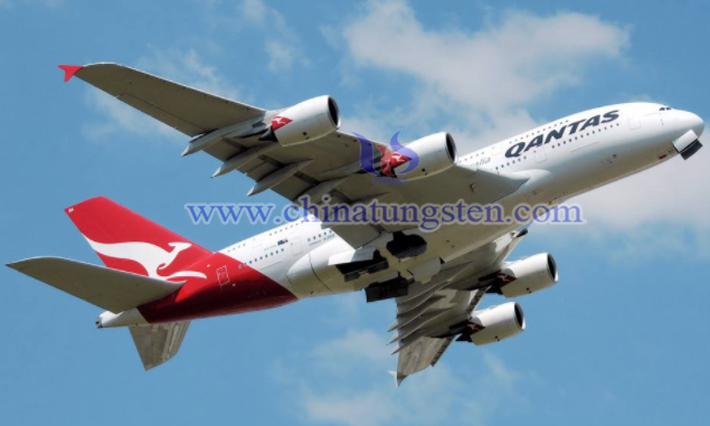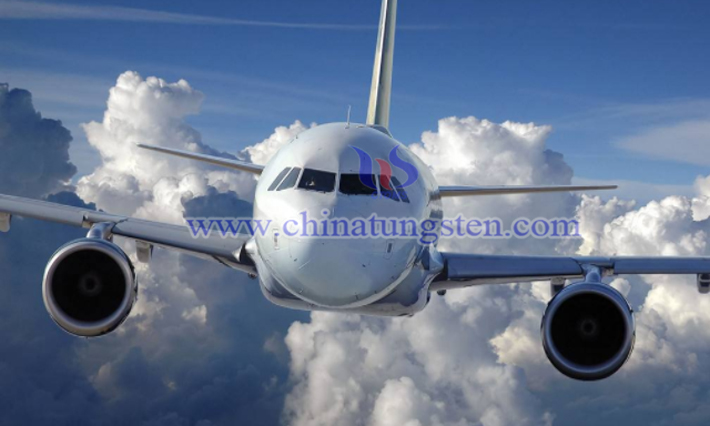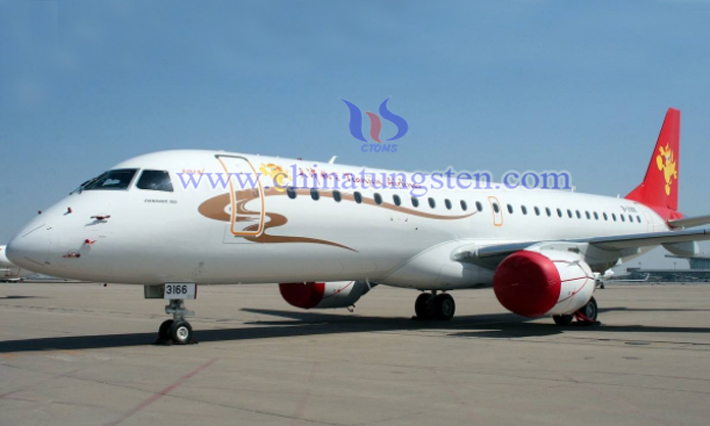Tungsten Alloy Counterweights in Aerospace Industry
- Details
- Category: Tungsten Information
- Published on Monday, 15 July 2019 18:30
Probably the most well-known outlet for tungsten alloys is the aerospace industry, where weights and counterweights are often required to be housed in restricted areas. With significant reductions in size possible, this in turn, leads to greater control of weight distribution.
These components can increase the sensitivity of control mechanisms and keep the forces required to operate flight controls within acceptable limits. Vibrations in the dynamic components of aircraft engines and propeller systems are highly undesirable. Vibration, caused by mass imbalance of externally rotating components, can be reduced or eliminated by using mass trim weights. Additionally, counterweights are incorporated into the pitch control systems of many propeller designs as a failsafe mechanism.

During flight the propellers are kept at the correct angle by hydraulic pressure. Should this system fail the weights counter the blades’ tendency towards fine pitch and ensure that over-speeding is prevented. Flight control surfaces, such as elevators, rudders and ailerons, often incorporate counterbalances to optimize performance. Tungsten alloys offer designers several advantages over conventional balance materials such as lead or steel. The higher density of the alloys permits smaller components to be used, reducing overall system weight. Unlike lead, which can exhibit creep at ambient temperatures, these alloys are stable and so may be used in mechanically stressed positions without the need for additional fabrication and encasement.

Other aerospace applications of tungsten alloys include mass balances in satellites and helicopter rotor blades, and in gyroscopic controls for missiles and avionics. In contrast to their vibration damping applications, these materials are also utilized, in the cockpit, to exaggerate the required vibrations in stall-warning shakers for control columns. Similarly, the advent of fly-by-wire controls has introduced small quantities of tungsten alloys into flight control joysticks, in order to increase stick inertia and therefore reintroduce some of the ‘feel’ that is present in traditional controls, which use mechanical linkages to the elevators and ailerons. In addition to their incorporation as weights and balances, tungsten alloys contribute to aircraft fabrication and repair operations. To deaden the vibration caused by rivet guns, bucking bars (‘riveting dollies’ or ‘hand anvils’) are used to absorb the force. The vibration can result in damage to nerves, muscles and bones in operators’ hands causing Carpel Tunnel Syndrome (Vibration White Finger). Many aerospace companies now reduce the effects of vibration by using tungsten alloy bucking bars.

- Tungsten Alloy Manufacturer & Supplier, Chinatungsten Online: www.tungsten-alloy.com
- Tungsten News & Prices of China Tungsten Industry Association: www.ctia.com.cn
- Molybdenum News & Price: news.molybdenum.com.cn
- Tel.: 86 592 5129696; Fax: 86 592 5129797; Email: sales@chinatungsten.com



 sales@chinatungsten.com
sales@chinatungsten.com